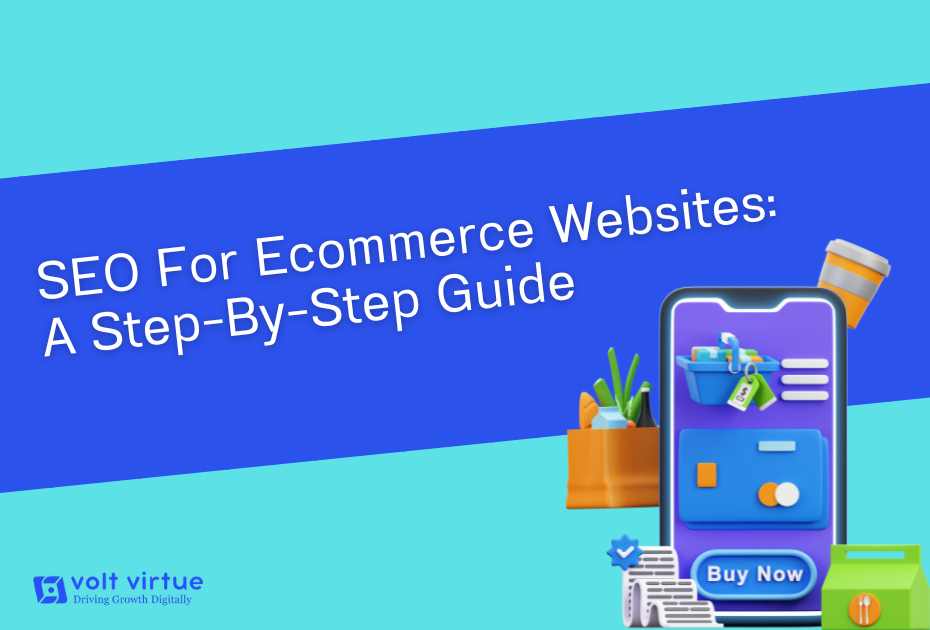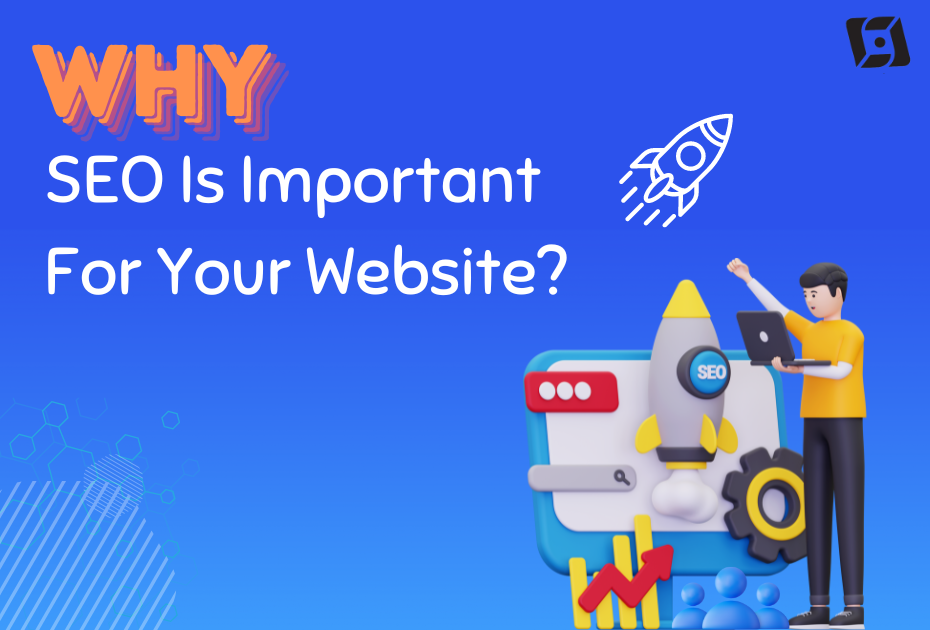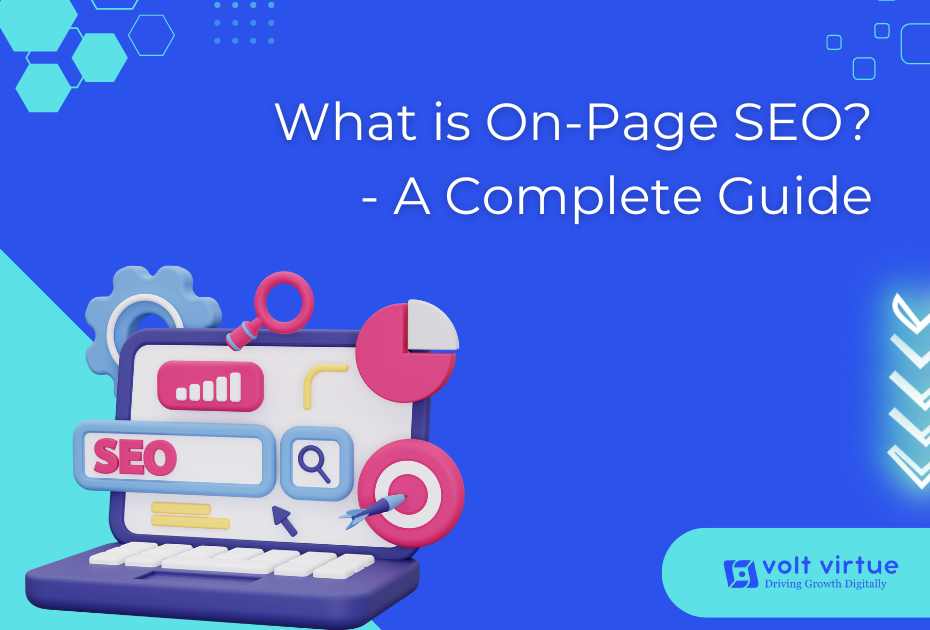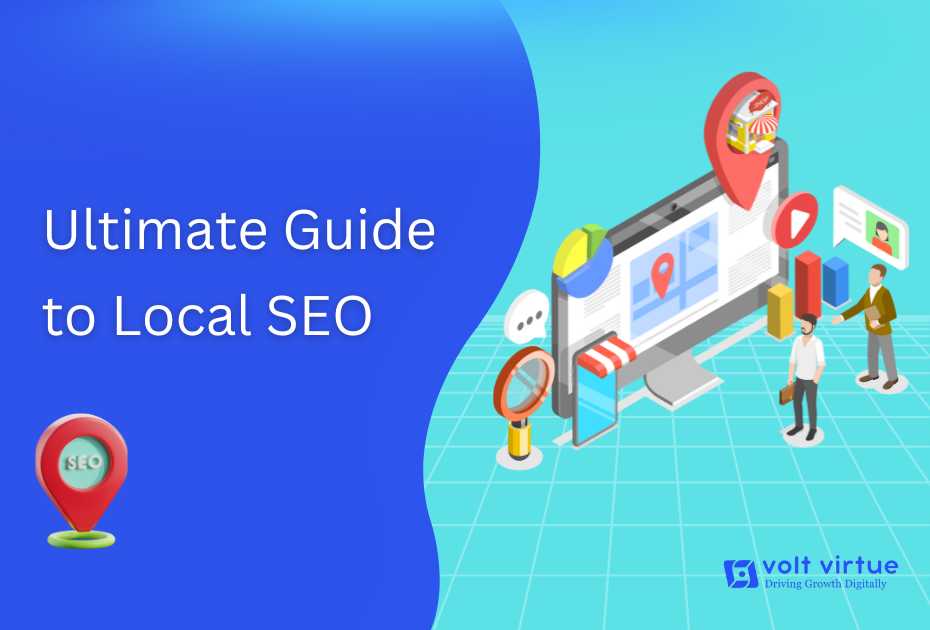
If you’re reading this, you already understand how crucial SEO is for e-commerce websites. You likely recognize its value but may not be sure where to begin. That’s okay SEO can feel overwhelming at first. In this blog you can read the theory about SEO for Ecommerce websites: A step by step guide.
One of the most difficult things for any e-commerce company to do is to stand out in search results. Attracting new customers and guiding them through their buying journey is essential for growth and that’s where Google comes in. When done right, SEO helps potential buyers discover your store at every stage of their search.
In this guide, we’ll walk you through the foundational SEO strategies every e-commerce website should implement. These tips will help you get started, send the right signals to Google, and pave the way for long-term SEO success.
What is SEO for E-commerce?
E-commerce SEO is the practice of optimizing your online store to enhance its visibility and ranking on search engines like Google. It primarily focuses on enhancing category and product pages, as these are often the most profitable areas of your site.
Unlike paid or shopping ads, organic search listings appear naturally on search engine results pages (SERPs) without requiring any advertising budget. These listings are earned through consistent and well-executed SEO strategies.
Think of SEO as a long-term investment that builds sustainable growth for your e-commerce business. When you take the time to optimize your site properly, you’ll build a strong foundation that drives consistent, high-quality traffic and delivers results for years to come.
Why Does SEO for E-commerce Matter?
When someone searches for a product on Google, they see a mix of paid ads and organic results. With effective e-commerce SEO, your product pages can appear in the top 10 organic search results where visibility drives the most clicks and conversions.
Ranking high organically means more exposure without ongoing ad costs. E-commerce SEO helps you reach your ideal audience, expand your market, and enhance the overall customer experience all without paying for every visitor.
Boost Organic Traffic
E-commerce is a highly competitive space, with major players like Amazon, eBay, and Craigslist dominating global search rankings along with niche marketplaces leading in local searches. Implementing effective SEO strategies can elevate your store’s position in search engine results pages (SERPs), boosting visibility and attracting more organic traffic to your website.
Increase Conversion Rates
You can draw in customers who are actively looking for the goods or services you offer by ranking for pertinent keywords. These high-intent visitors are easier to convert into paying customers, resulting in improved conversion rates and increased sales.
Enhance User Experience
SEO isn’t just about keywords it also involves improving site speed, mobile responsiveness, and intuitive navigation. These elements contribute to a seamless browsing experience that keeps users engaged and encourages deeper exploration of your products, ultimately boosting your chances of conversion.
How to Optimize Your E-commerce Site for SEO?
Effective e-commerce SEO begins with in-depth research, including a clear understanding of your competitors, product offerings, and target audience. From there, it’s about creating and optimizing your site content to attract qualified traffic and guide users toward confident purchase decisions.
Ready to get started?
Here are 14 key steps to help you build a search engine friendly online store starting with these eight essential best practices:
Find the Right Keywords:
Finding the keywords you want your website to rank for is the first stage in creating a successful e-commerce SEO plan. This process begins with conducting in-depth keyword research.
Finding the words and phrases that prospective buyers use while looking for goods similar to yours online is known as keyword research.
By optimizing your product and category pages around these keywords, you can improve their chances of ranking higher for the search terms your potential customers are actively using.
One important consideration while doing keyword research is search intent, or the purpose or motivation behind a user’s inquiry.
Simply put, it’s about understanding what users are looking to discover or accomplish when they enter a search query on Google.
Pages that align closely with search intent have a much better chance of ranking prominently in the search engine results pages (SERPs).
The four main types of search intent are:
- Navigational: Users want to find a specific site or page (e.g., “Nike official website”)
- Informational: Users are looking for information (e.g., “how to clean leather sneakers”)
- Commercial: Users are comparing products before making a decision (e.g., “best running shoes for flat feet”)
- Transactional: Users have high purchase intent and are ready to complete a transaction (e.g., “buy men’s running shoes online”).
For e-commerce businesses, commercial and transactional keywords are especially valuable because users searching with these intents are much closer to making a purchase compared to those simply gathering information.
Analyze Your Competitor’s Performance
When it comes to competitor research, think of it this way:
- Top-performing rivals tell you which tactics are worthwhile.
- Poor-performing competitors highlight what mistakes to avoid.
There are two primary types of competitors to consider:
- Keyword competitors: These are websites that rank for the specific keywords you’re targeting, even if they don’t offer the same products or services.
- Industry competitors: These businesses provide similar products or services but may not target the same keywords as you.
A comprehensive e-commerce SEO strategy requires analyzing both keyword and industry competitors. By doing so, you gain a complete understanding of your current position in the market and can create a more informed, effective plan to improve your rankings and drive growth.
If you’re working with an experienced ecommerce SEO agency, they’ll take both types into account to shape a strategy tailored to your business goals.
Keep in mind that your competitors may be a mix of both keyword and industry competitors.
To analyze their performance, start by listing the businesses you believe are your main competitors. Then, use an SEO tool like Ahrefs, Semrush, or a similar organic research platform to evaluate their websites. These tools offer valuable insights into competitors’ keyword rankings, traffic sources, backlink profiles, and overall SEO strategies.
On-Page SEO for E-Commerce Websites
On-page SEO refers to optimizing individual pages on your e-commerce site to improve search engine rankings and attract more targeted traffic. Here are the key elements to focus on:
Title Tags and Meta Descriptions
Title Tags:
Craft compelling, keyword-rich title tags for every page to improve visibility and attract clicks. Keep them under 60 characters to ensure they display properly in search engine results.
Meta Descriptions:
Write clear and engaging meta descriptions that accurately summarize the page content. Include your target keywords and keep meta descriptions under 160 characters to prevent them from being cut off in search results.
Product Descriptions
Unique Content:
Avoid using generic manufacturer descriptions. Instead, create unique and detailed product descriptions to avoid duplicate content issues.
Highlight Benefits:
Emphasize the features and benefits of each product. Use bullet points for better readability and to make key information easily scannable.
Keyword Integration:
Naturally incorporate relevant keywords into your descriptions without overstuffing.
Header Tags (H1, H2, H3)
H1 Tag:
Each page should feature a unique H1 tag that includes the main keyword.
Subheadings:
Use H2 and H3 tags to organize content. Include secondary keywords where appropriate to improve both readability and SEO.
Image Optimization
Alt Text:
Add descriptive alt text with relevant keywords to all images to improve accessibility and help search engines interpret image content.
File Names:
Rename image files using descriptive, keyword-rich names. (e.g., “blue-running-shirt.jpg” instead of “IMG1234.jpg”).
Internal Linking
Strategic Linking:
Add descriptive alt text with relevant keywords to all images to improve accessibility and help search engines interpret image content.
Anchor Text:
Use descriptive, keyword-rich anchor text to provide context for linked content and improve your site’s SEO performance.
Create a Visual Sitemap
If you’re building your e-commerce website from the ground up, it’s essential to design a structure that’s both user-friendly and optimized for search engines. A visual sitemap is a graphical representation of your site’s navigation and URL structure, helping you plan how both users and search engines will navigate your website.
After finalizing your sitemap, submit it to Google Search Console to ensure your pages are properly indexed. This allows Google to efficiently discover, crawl, and index your website’s pages, improving your visibility in search results.
Technical SEO for eCommerce
Technical SEO forms the foundation of your website’s search visibility. While on-page SEO enhances individual pages, technical SEO ensures your site is properly structured, crawlable, and indexable by search engines. Here’s how to optimize your eCommerce store technically:
Improve Site Speed
Site speed is a key ranking factor that directly affects user experience slow-loading pages often result in higher bounce rates and fewer conversions. To enhance your site’s speed:
- Compress images without compromising quality.
- Enable browser caching.
- Utilize a Content Delivery Network (CDN) to deliver content more quickly to users around the world.
Implement and Maintain an XML Sitemap
An up-to-date XML sitemap enables search engines to find and index your pages more effectively. Be sure to submit it to Google Search Console and update it whenever your site structure changes. This improves indexing and ensures new or updated pages are quickly found by search engines.
Fix Broken Links
Regularly scan your site for broken or outdated links. These issues not only disrupt the user experience but also negatively impact your SEO performance. Use tools to identify and fix broken links to maintain a healthy link structure.
Ensure Site Security with HTTPS
Security is vital for both SEO and user trust. Implementing HTTPS via an SSL certificate protects data exchanged on your site. Search engines favor secure websites, and users feel safer providing sensitive information like payment details. Monitor your site regularly to maintain a secure environment.
Use Structured Data (Schema Markup)
Structured data enables search engines to interpret your content more accurately. For eCommerce sites, schema markup can showcase product details such as price, reviews, and stock status directly in search results. This boosts visibility and can lead to higher click-through rates. Apply schema to product pages, categories, and relevant blog posts following Google’s structured data guidelines.
Avoid Thin Content
Thin content includes low-value pages with minimal or duplicate information. These pages underperform in search rankings. Ensure that all product and category pages have unique, detailed, and informative content that adds value for customers. Avoid reusing manufacturer descriptions and invest in original copy.
Create and Submit a Robots.txt File
The robots.txt file guides search engine crawlers on which pages to access and which to exclude from indexing. For eCommerce sites, this helps prevent indexing of unnecessary pages like cart, checkout, or admin sections, allowing crawlers to focus on high-value areas like product and category pages.
Enhance Crawlability
Ensure that all important pages especially category and product pages are easily accessible to search engines. Use logical internal linking and a clean site architecture so crawlers can efficiently navigate your site. Ensuring proper crawlability allows search engines to access and index your pages more efficiently, improving their visibility in search results.
Manage Duplicate Content
Duplicate content, such as identical product descriptions across multiple pages, can confuse search engines and dilute ranking signals. Use unique content wherever possible. For unavoidable duplicate content, use canonical tags or 301 redirects to signal to search engines which version should be prioritized.
Optimizing Product Pages for Better SEO and Conversions
Product pages are the heart of your eCommerce business, so it’s essential to invest time and effort into optimizing them for both search engines and users. Many store owners make the mistake of writing a few generic lines and uploading a basic image, but effective product pages need much more to perform well in search and drive sales. Here’s how to do it right:
Product Name Optimization
The product name plays a vital role in SEO. It’s often used in the page’s SEO title, URL, and header tags. To increase discoverability, include a relevant keyword or commonly searched phrase in the product name. This not only helps with search rankings but also improves visibility when the product is shared on platforms like Facebook or Pinterest, as the keyword appears in the post title.
Image Optimization
Images play a vital role in enhancing both user experience and SEO. To optimize them:
- File Name: Use descriptive, keyword-rich filenames instead of generic ones like “IMG0010.jpg”.
- ALT Text: Add meaningful alt text that includes the product name and target keyword. This enhances accessibility and aids search engines in interpreting image content, boosting your chances of appearing in image search results.
Use of Product Videos
Adding videos to product pages can greatly increase user engagement and improve conversion rates. Videos can:
- Explain the product’s features and benefits
- Demonstrate how to use the product
- Provide customer testimonials or reviews
Videos help build trust and give customers the confidence they need to complete their purchase.
By focusing on these key areas product names, images, and videos you enhance the visibility, usability, and conversion potential of your product pages. An optimized product page not only performs better in search engine rankings but also delivers a richer shopping experience for your customers.
E-commerce SEO Mistakes to Avoid
Avoiding common SEO mistakes is equally as important as following best practices. Here are some frequent issues that can negatively impact your e-commerce site’s rankings:
- Not using breadcrumbs: Breadcrumb navigation improves site structure for users and helps search engines understand page hierarchy.
- Missing schema markup: Failing to add structured data means missing out on rich snippets, which can boost visibility in search results.
- Indexing low-value pages: Allowing filters, internal search results, or other thin pages to be indexed can dilute your site’s SEO and clutter Google’s view of your site.
- Keyword stuffing: Overusing keywords on pages not only makes content unreadable but can also trigger penalties from search engines.
- Blocking important pages: Accidental use of noindex tags or incorrect robots.txt directives can prevent key pages from appearing in search results.
- Slow website performance: A sluggish site, especially on mobile, frustrates users and can lead to higher bounce rates and lost sales. Optimizing your site’s speed is crucial for enhancing both SEO and user experience.
Conclusion
Implementing effective SEO strategies for your e-commerce website can significantly impact your online success. By prioritizing keyword research, optimizing both on-page and off-page elements, improving technical performance, and leveraging content marketing, you can enhance your site’s visibility and drive more qualified traffic.
Don’t forget to regularly monitor your progress using SEO tools and perform routine audits to refine your strategy and maintain long-term growth.




